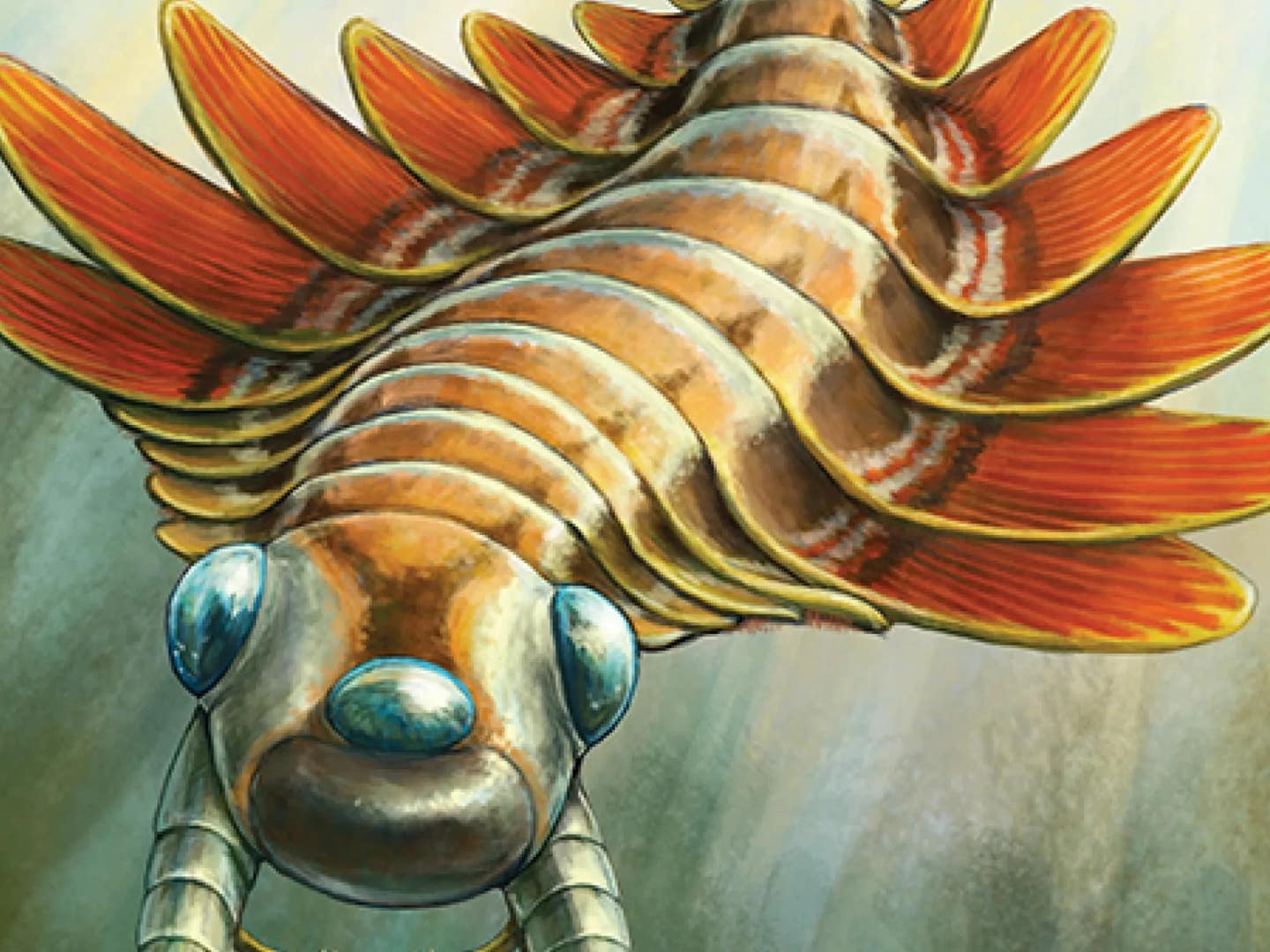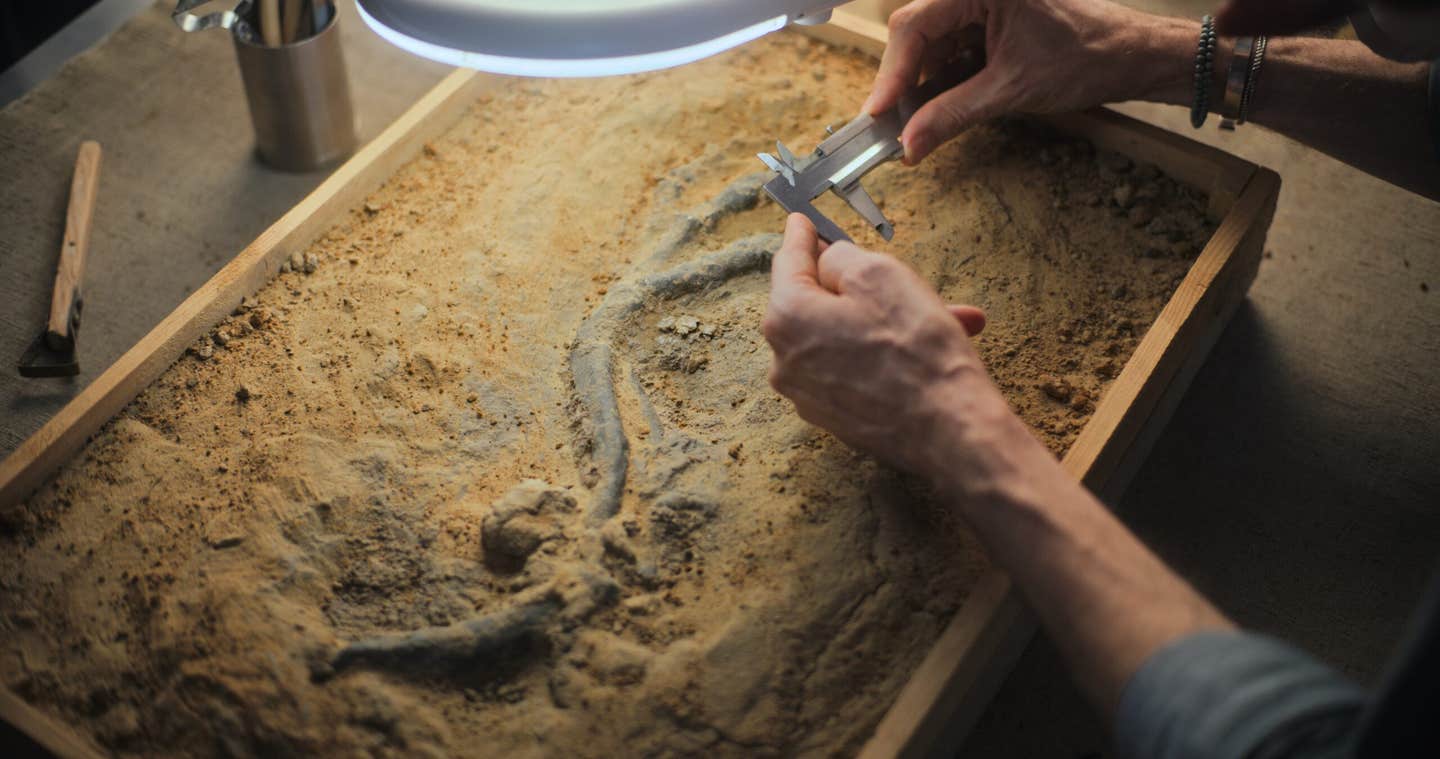Ancient sea predator had three-eyes and breathed through its rear
Newly found fossil Mosura fentoni is reshaping our understanding of arthropod evolution from Canada’s Burgess Shale.

Life reconstruction of Mosura fentoni. (CREDIT: Art by Danielle Dufault, ROM)
Scientists have uncovered a remarkable fossil from Canada's Burgess Shale, a discovery that reshapes how the evolution of arthropods is understood. This new find, named Mosura fentoni, lived roughly 506 million years ago and belonged to a group known as radiodonts.
These ancient creatures represent the earliest branches on the arthropod family tree, long before insects, spiders, and crabs evolved. What makes Mosura especially fascinating is its surprising complexity, previously unseen in its relatives.
Mosura was about the length of your index finger but packed an unexpected anatomical punch. With its three distinct eyes and sharp, spine-tipped appendages, it was built to hunt larger prey actively. Its mouth was circular and rimmed with teeth, perfect for capturing and tearing its meals.
Yet, this newly described radiodont wasn't notable just for these predatory features—it stood apart due to an unusually structured body, defying previous notions about this group's simplicity.
A Body Designed for Survival
Typically, radiodonts displayed a basic body plan: a head region with specialized feeding limbs followed by trunk segments lined with broad swimming flaps. Mosura changed the script dramatically. Its body had up to 26 segments, more than any other radiodont discovered, despite its small size. Each segment played a different role, showcasing a higher level of complexity.
"Mosura has 16 tightly packed segments lined with gills at the rear end of its body," explains Joe Moysiuk, Curator of Paleontology and Geology at the Manitoba Museum. "This is a neat example of evolutionary convergence with modern groups, like horseshoe crabs, woodlice, and insects, which share a batch of segments bearing respiratory organs at the rear of the body."
Scientists speculate that these respiratory segments allowed Mosura to breathe more efficiently, a trait likely linked to specific habits or living conditions. Its broad swimming flaps provided powerful propulsion, while the tightly grouped, gill-rich segments supplied oxygen to support active hunting behavior.
Related Stories
Revealing Ancient Life in Extraordinary Detail
Radiodont fossils typically offer limited insight into soft internal anatomy. However, Mosura's preservation was exceptional, revealing striking details about its inner workings. Researchers identified clear traces of its circulatory system, nervous system, and digestive tract.
Jean-Bernard Caron, Curator of Invertebrate Paleontology at the Royal Ontario Museum (ROM), highlighted the rarity of this find. "Very few fossil sites in the world offer this level of insight into soft internal anatomy," he says. "We can see traces representing bundles of nerves in the eyes that would have been involved in image processing, just like in living arthropods."
Instead of veins and arteries, Mosura had an open circulatory system where its heart pumped blood into large internal spaces known as lacunae. These structures are visible in fossils as reflective patches extending throughout the body and into its swimming flaps. "The well-preserved lacunae of Mosura help us interpret similar, but less clear features seen before in other fossils," Moysiuk adds. "Their identity has been controversial, but we now confirm the ancient origin of this type of circulatory system."
Understanding Arthropod Evolution
The complexity of Mosura’s body contradicts earlier views about early arthropod simplicity. Previously, scientists believed that arthropods gradually evolved more distinct body regions, or tagmata, over millions of years.
Mosura, however, suggests that significant diversification in body structures occurred rapidly during the Cambrian period, over half a billion years ago. This rapid evolution produced various specialized forms among early arthropods, including Mosura’s unique body layout.
"Radiodonts were the first group of arthropods to branch out in the evolutionary tree, so they provide key insight into ancestral traits for the entire group," Caron says. "The new species emphasizes that these early arthropods were already surprisingly diverse and adapting similarly to their distant modern relatives."
Discoveries from Ancient Rock Layers
Fossils of Mosura primarily came from the Raymond Quarry in British Columbia’s Yoho National Park, a renowned site within the Burgess Shale fossil beds. Additional specimens were found near Marble Canyon in Kootenay National Park, revealing more of this creature’s ecological setting. These areas continue yielding remarkable Cambrian-era fossils, offering vital clues about early animal life.
One unique specimen examined by the research team dates back to the early 20th century, collected by Charles Walcott, who first discovered the Burgess Shale fossils. "Museum collections, old and new, are a bottomless treasure trove of information about the past," Moysiuk notes. "If you think you've seen it all before, you just need to open up a museum drawer."
Sharing Ancient Wonders
The ROM has led research on the Burgess Shale fossils for over half a century, uncovering dozens of new fossil sites and species. Located within Canada's Rocky Mountain Parks, these sites preserve marine life from the Cambrian period in exceptional detail. Visitors can explore many fossils at ROM’s Willner Madge Gallery, Dawn of Life, while Mosura will soon debut publicly at the Manitoba Museum in Winnipeg.
Parks Canada manages these fossil-rich areas, collaborating with researchers to enhance global understanding of Earth's history. The Burgess Shale became a UNESCO World Heritage Site in 1980, celebrated for its outstanding scientific value.
Mosura’s discovery showcases how each new fossil can significantly alter scientific views on life's history. It highlights that ancient oceans brimmed with organisms more intricate than previously imagined, mirroring the diverse adaptations of modern life forms. With each fossil uncovered, the story of early Earth life grows richer, challenging old ideas and sparking new questions about how animal complexity first emerged.
Note: The article above provided above by The Brighter Side of News.
Like these kind of feel good stories? Get The Brighter Side of News' newsletter.



